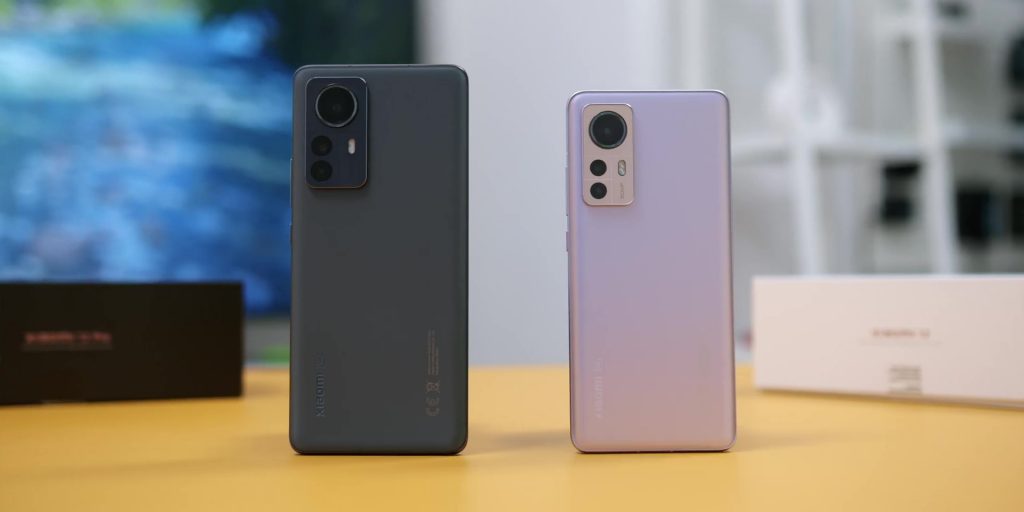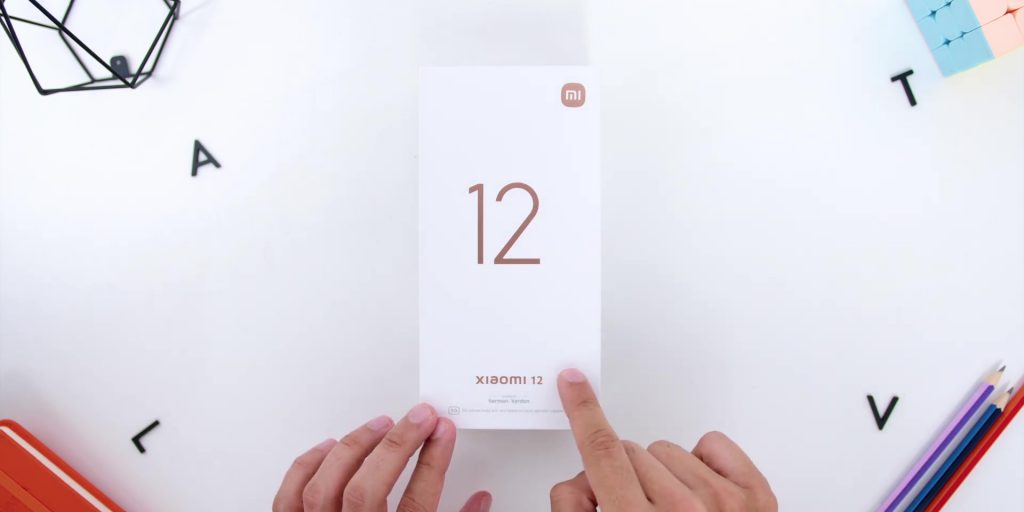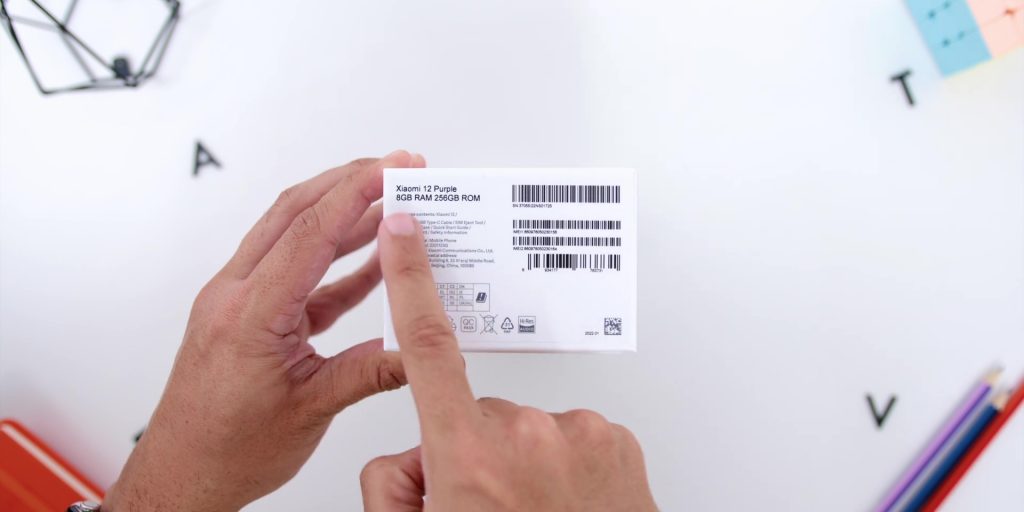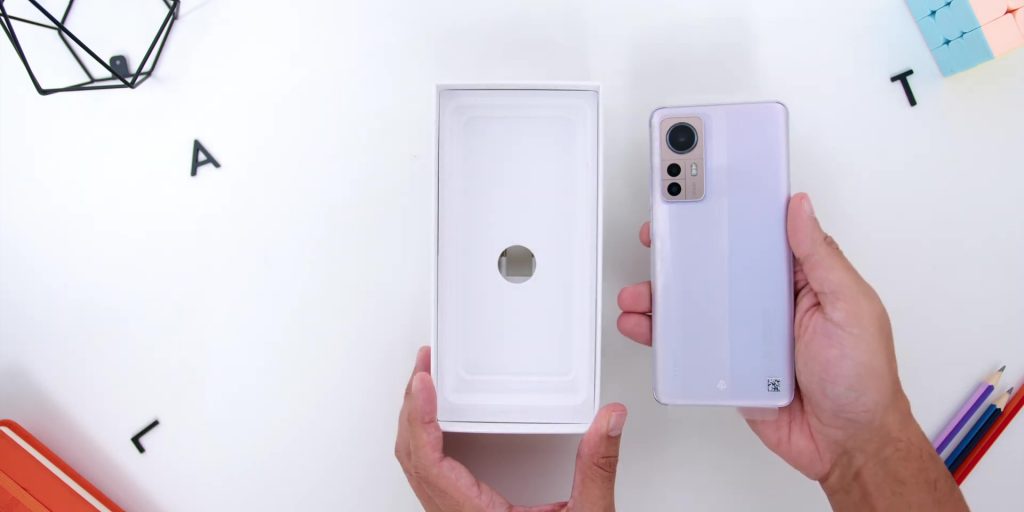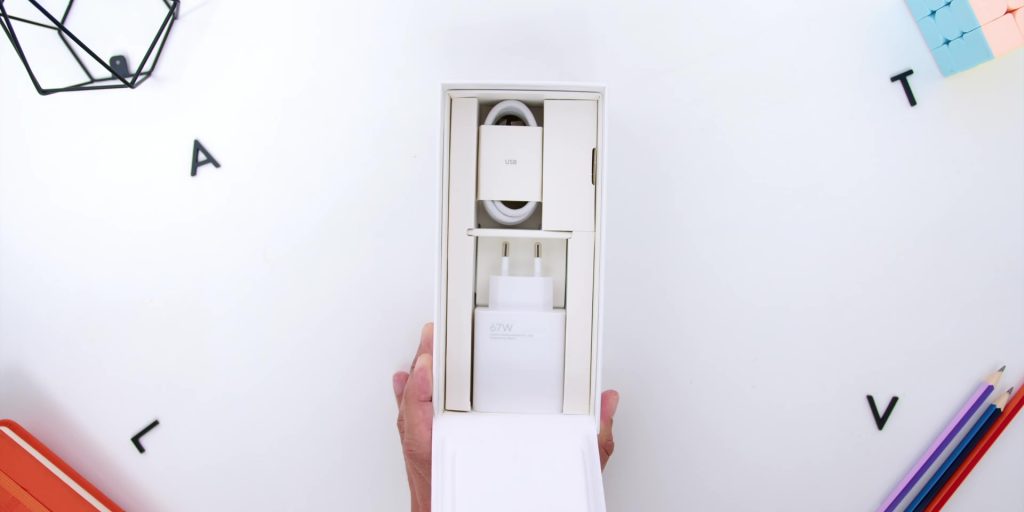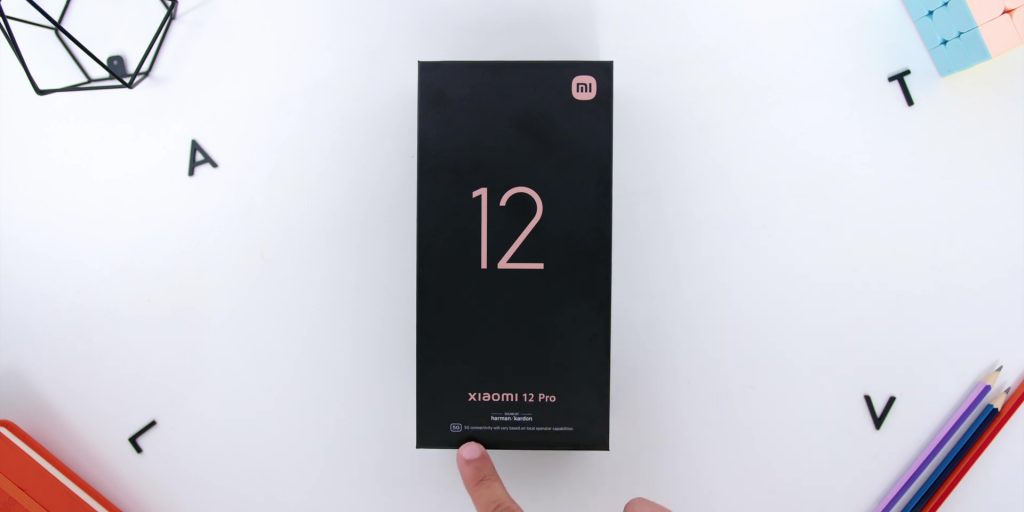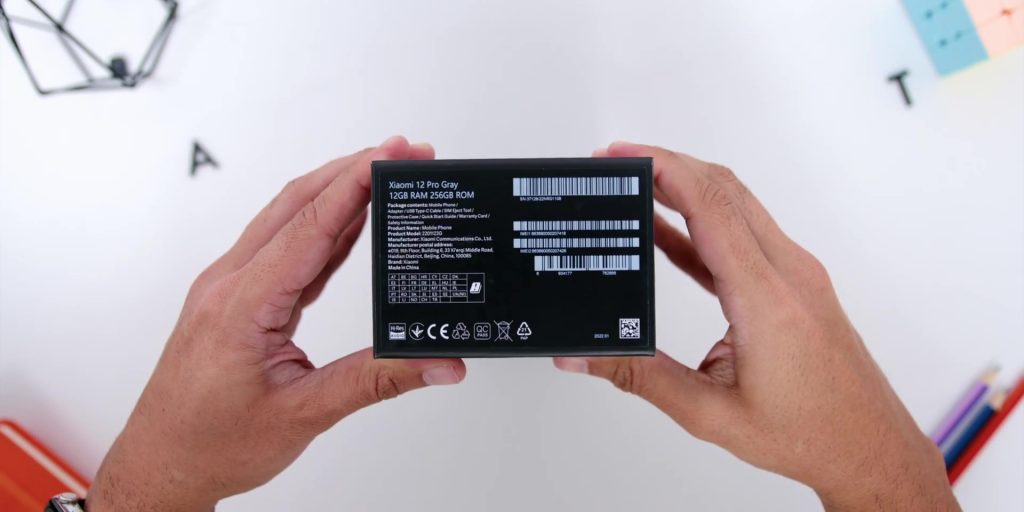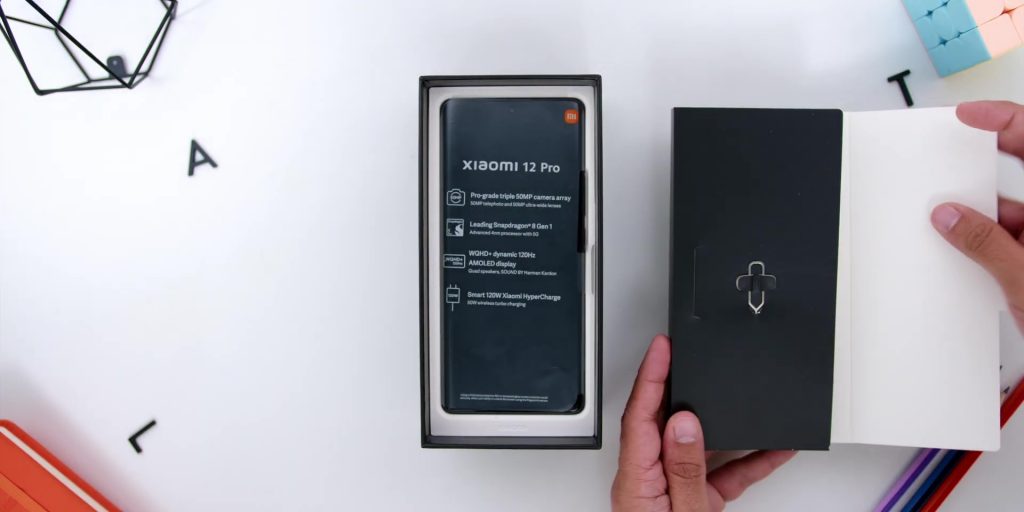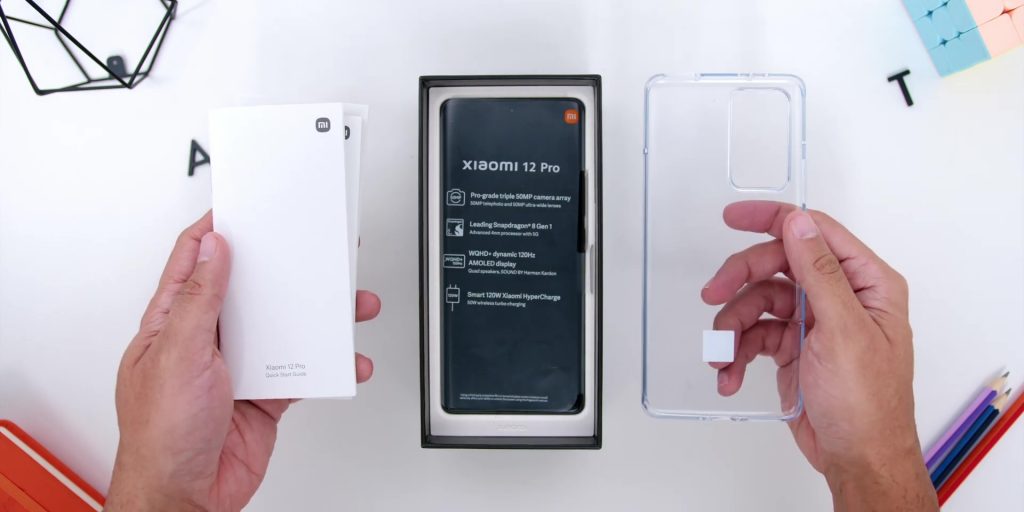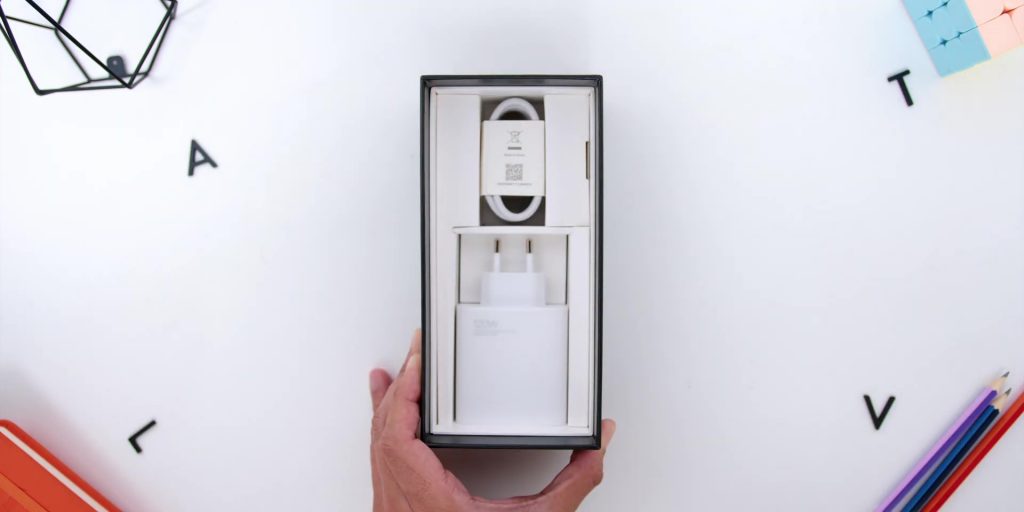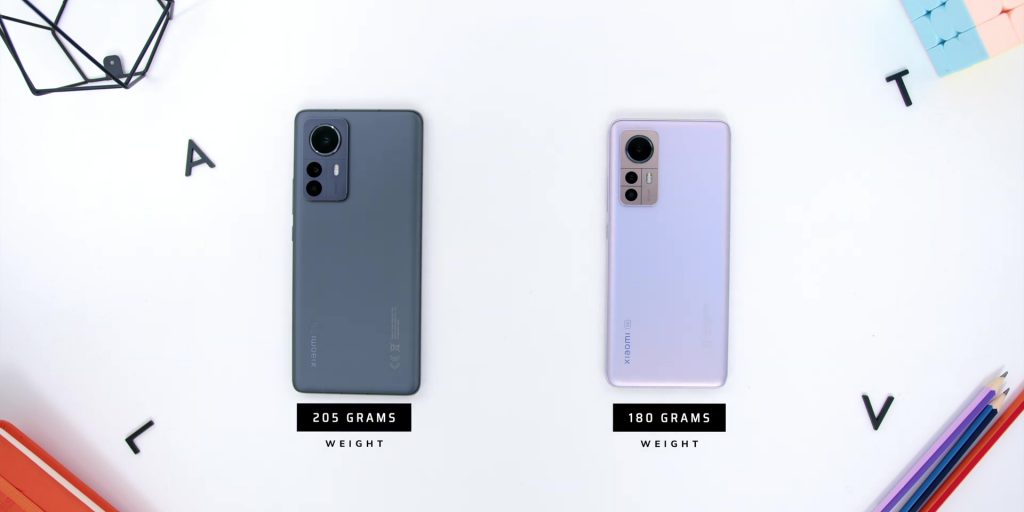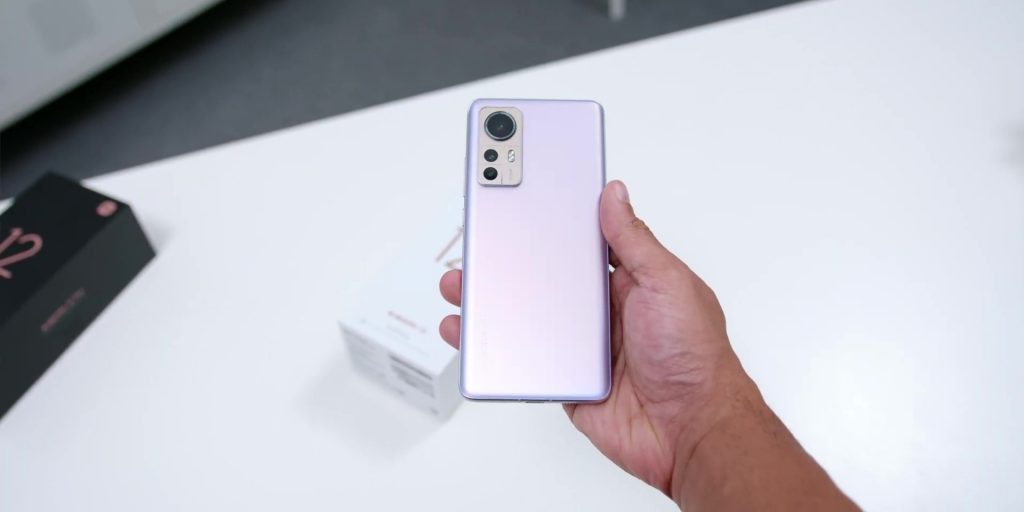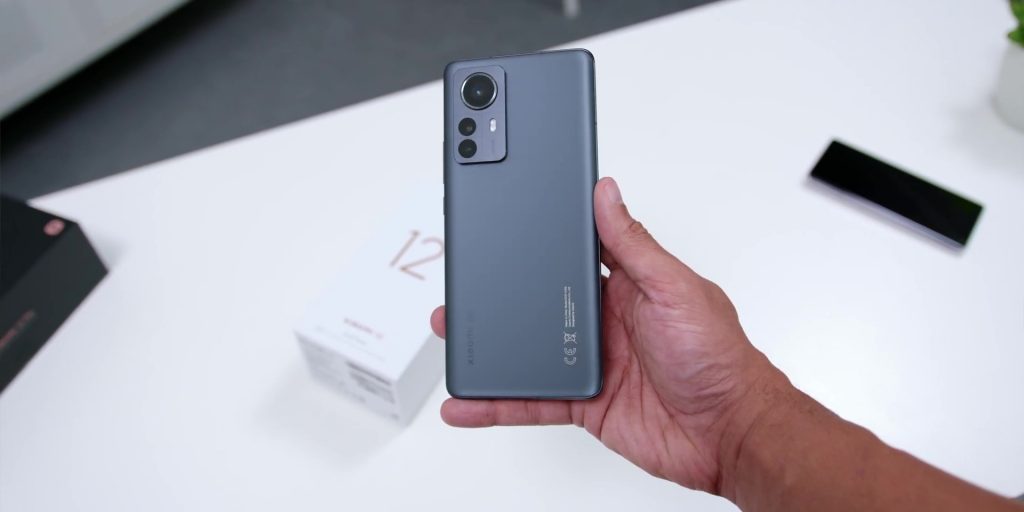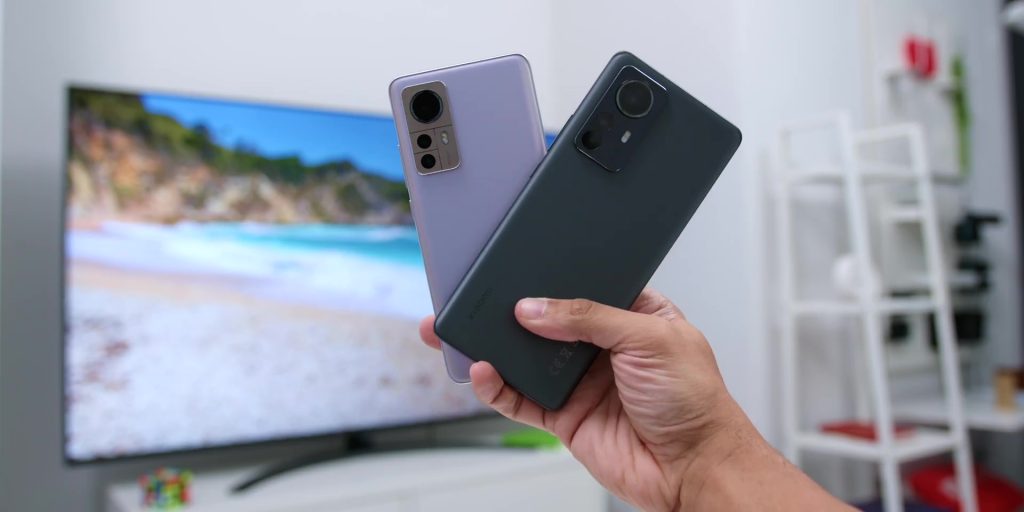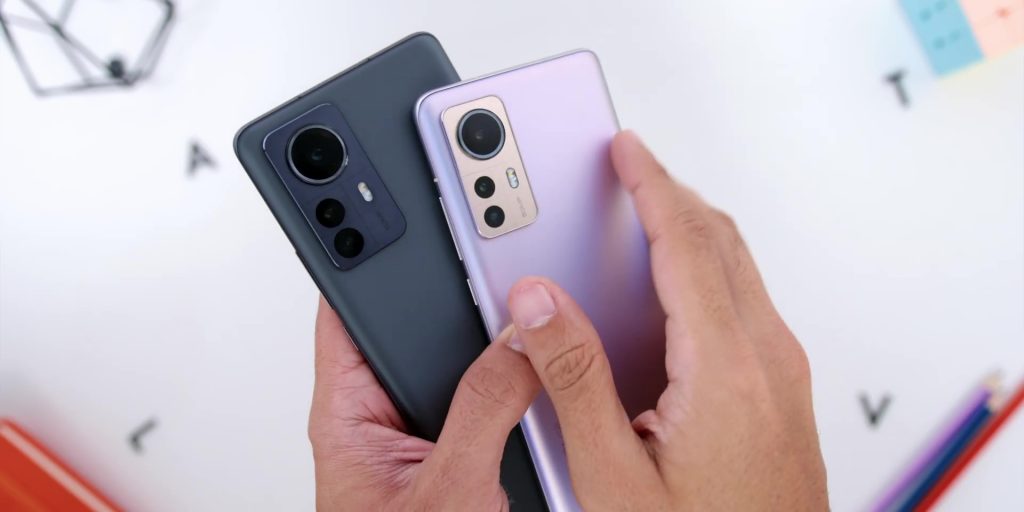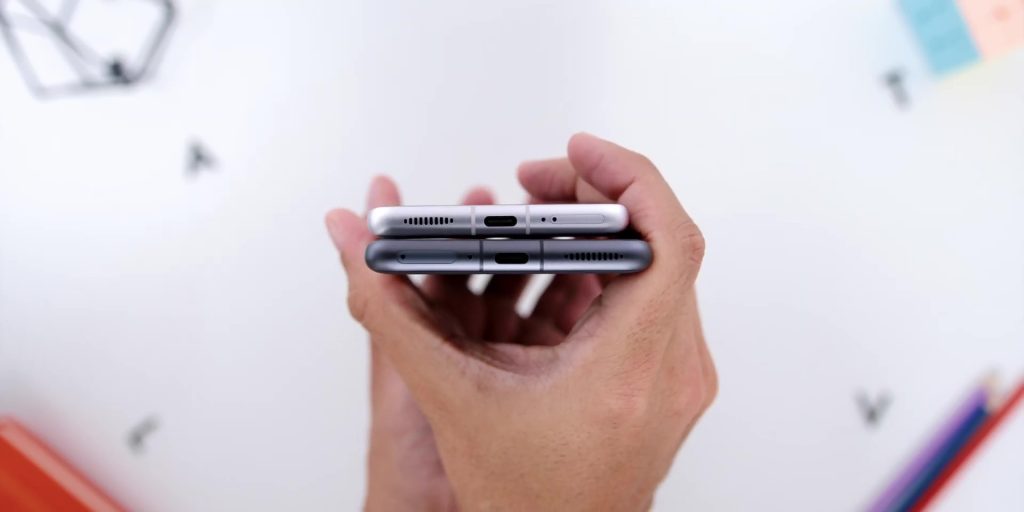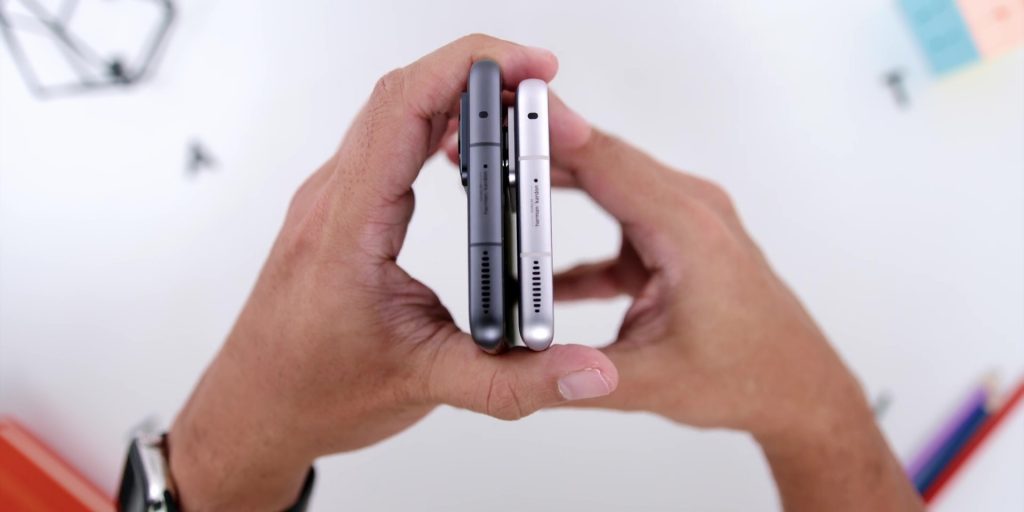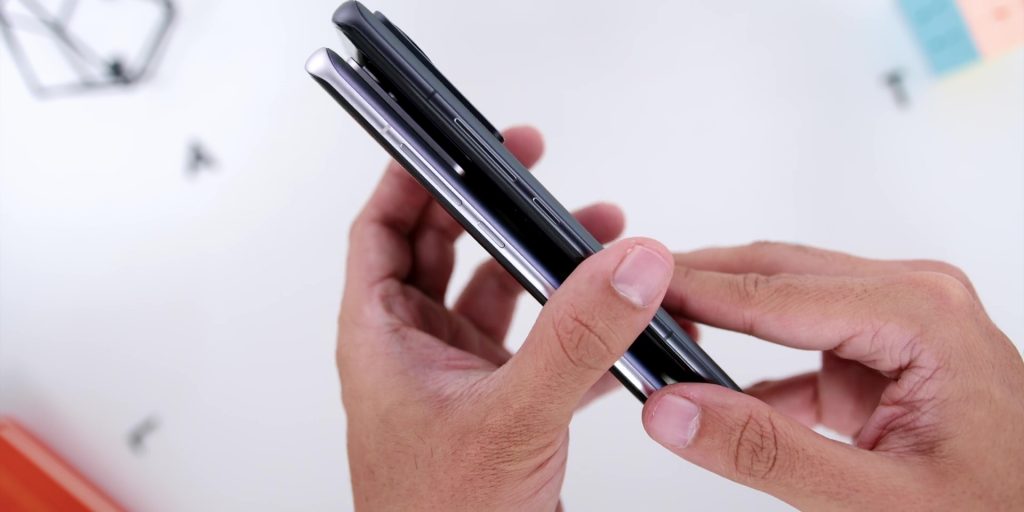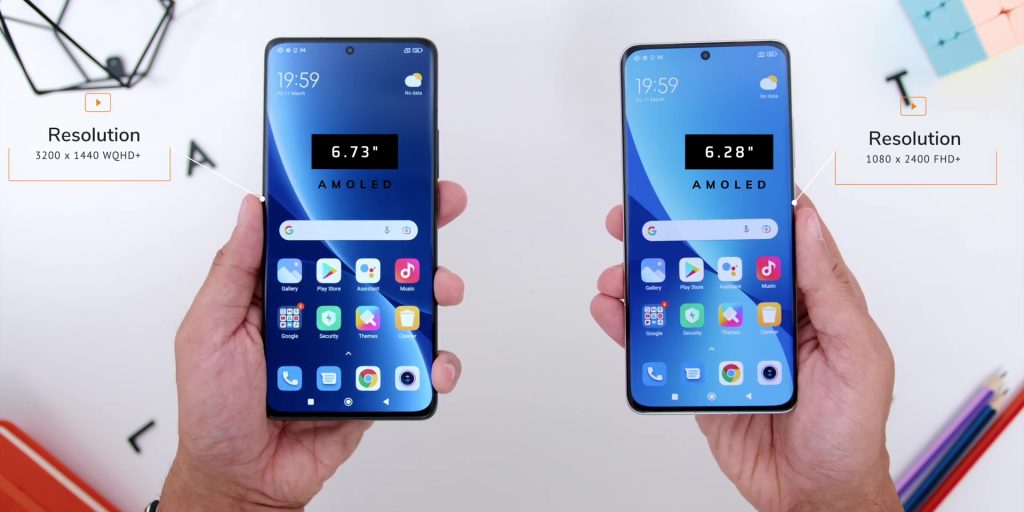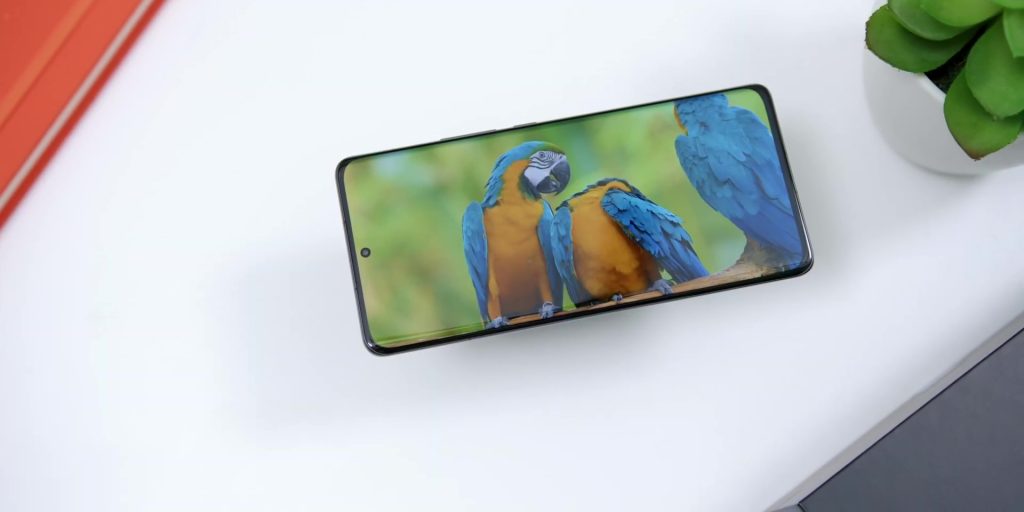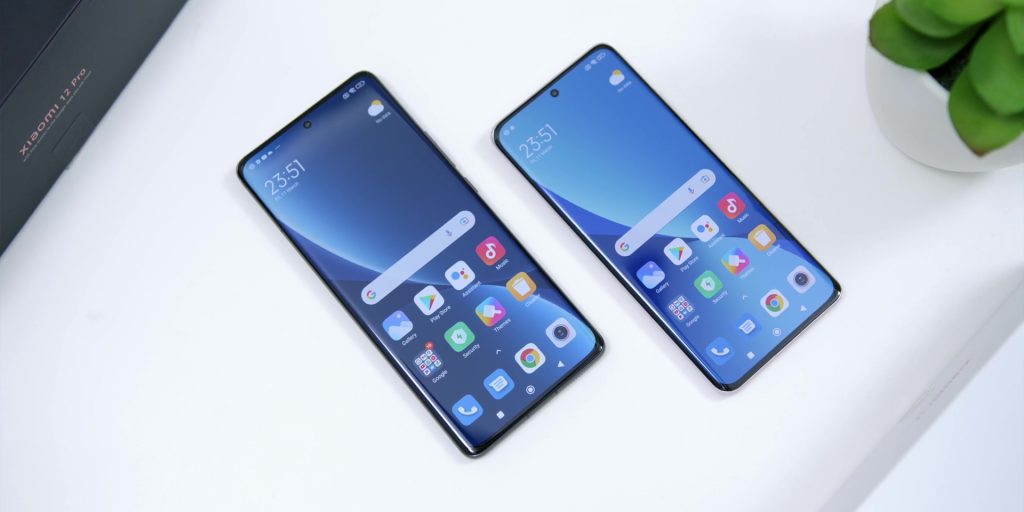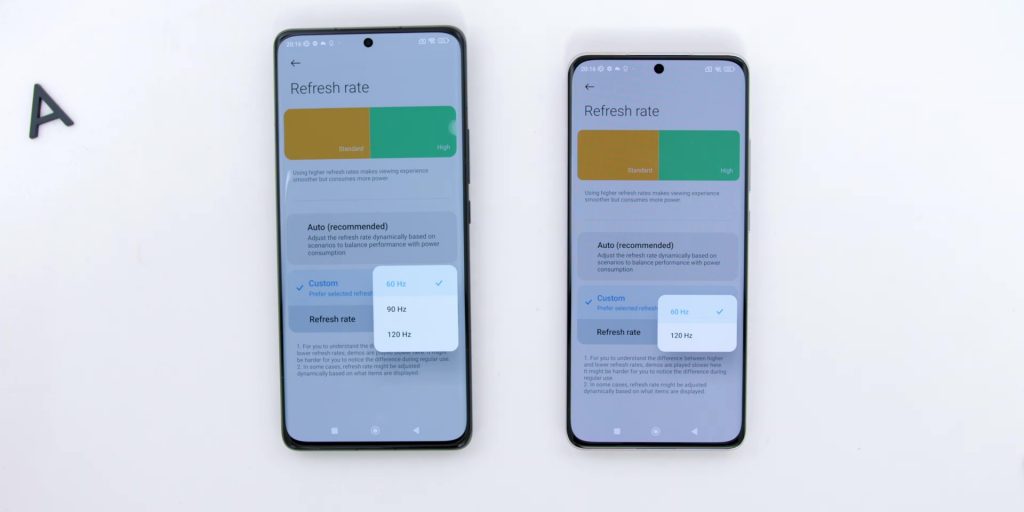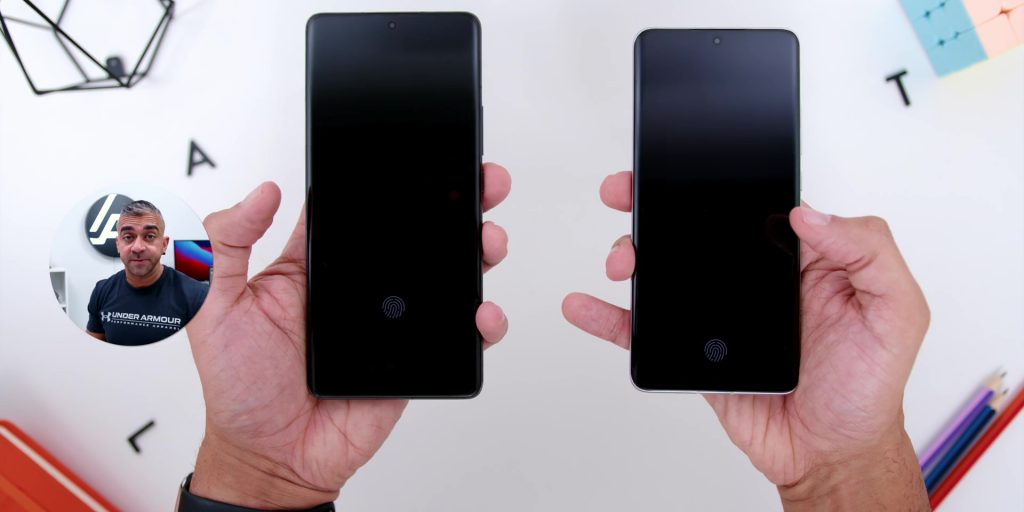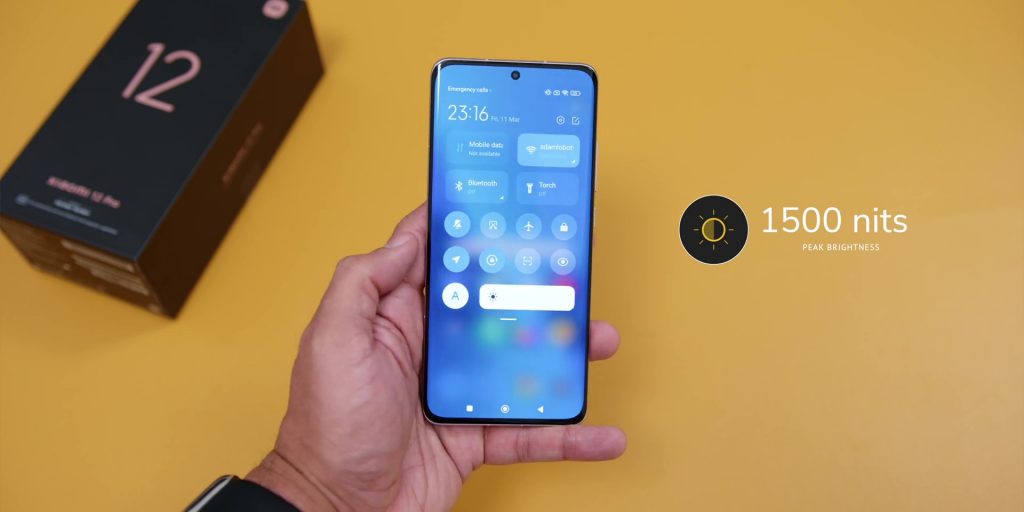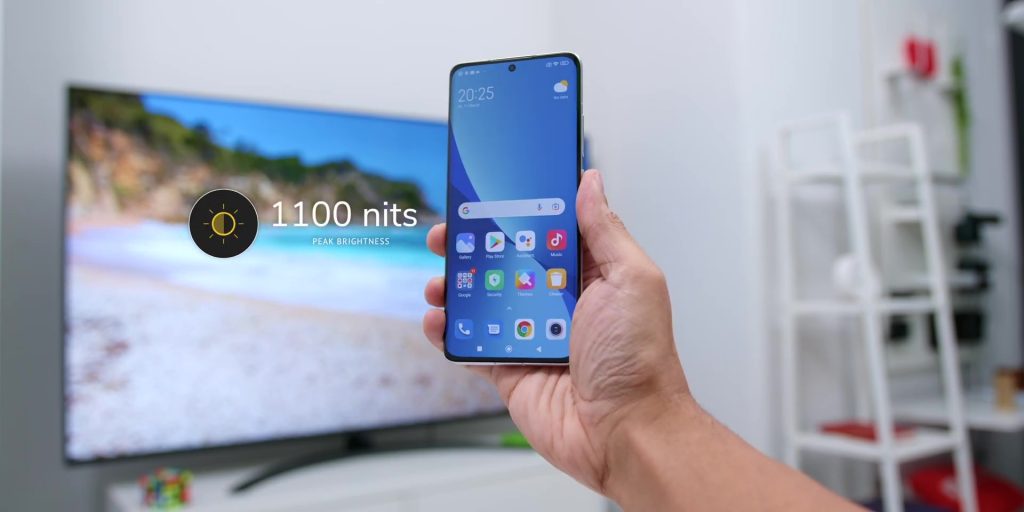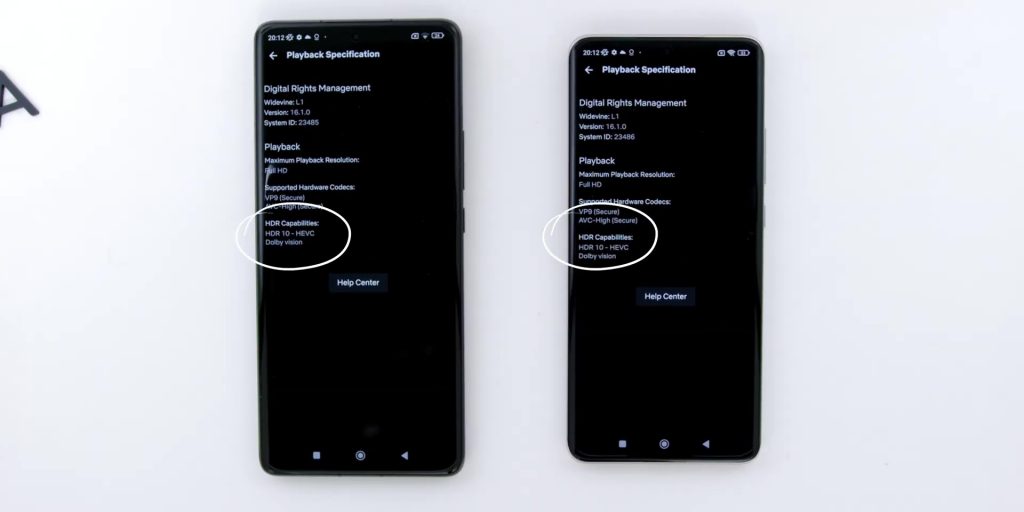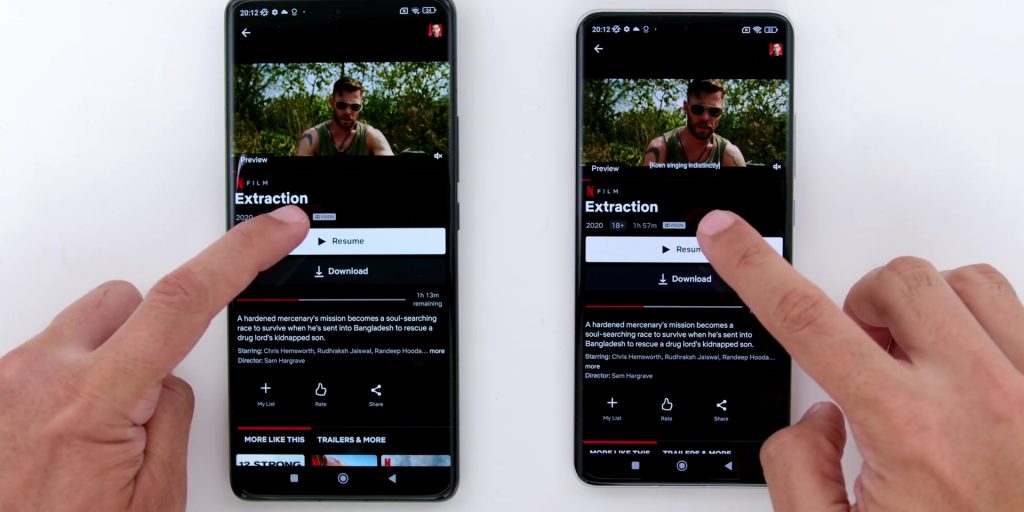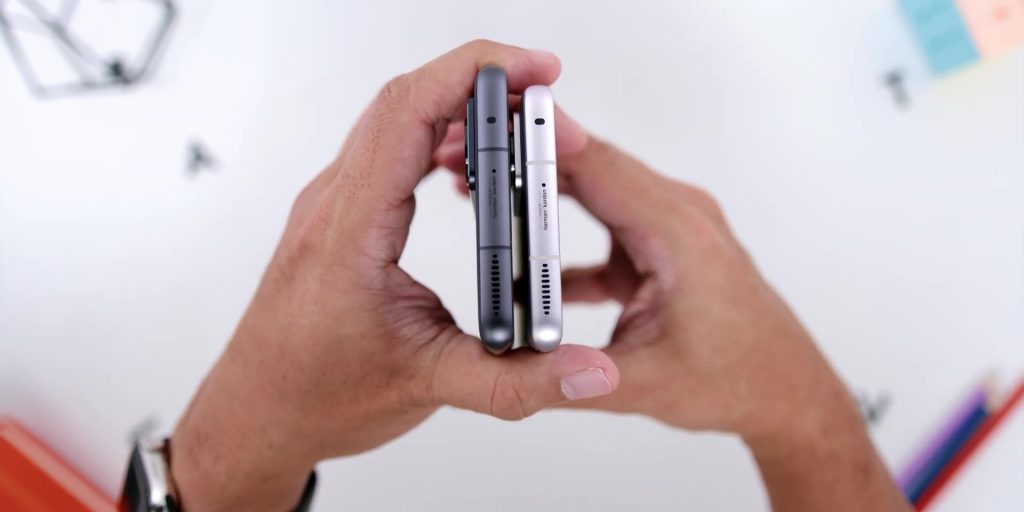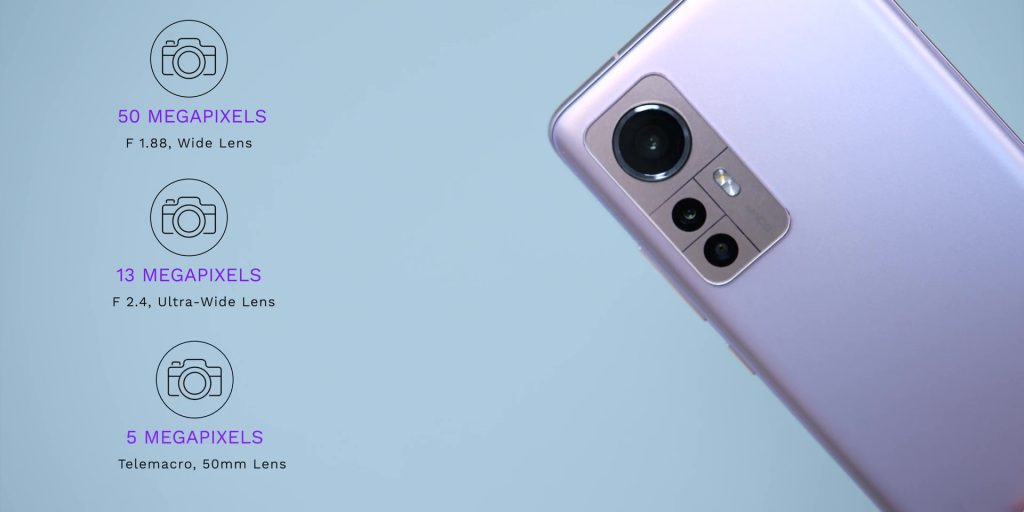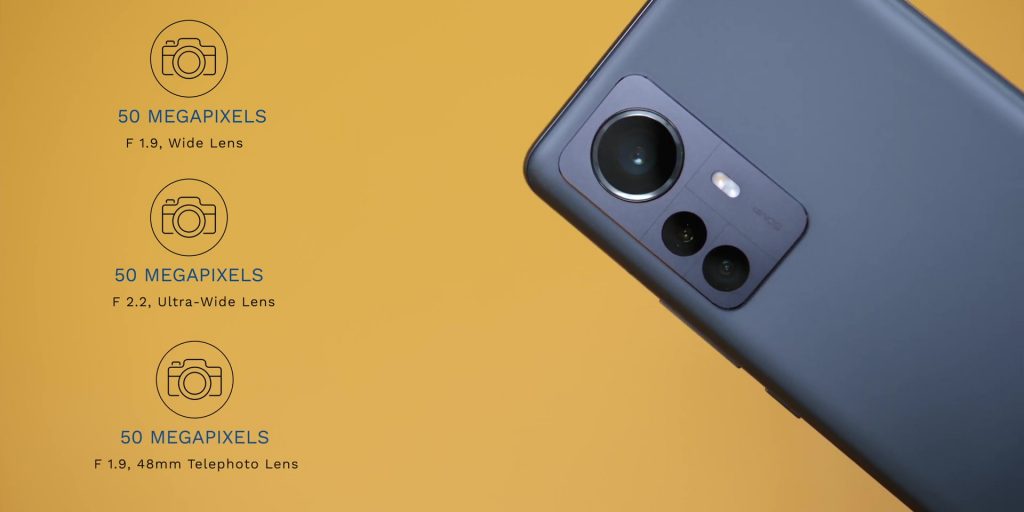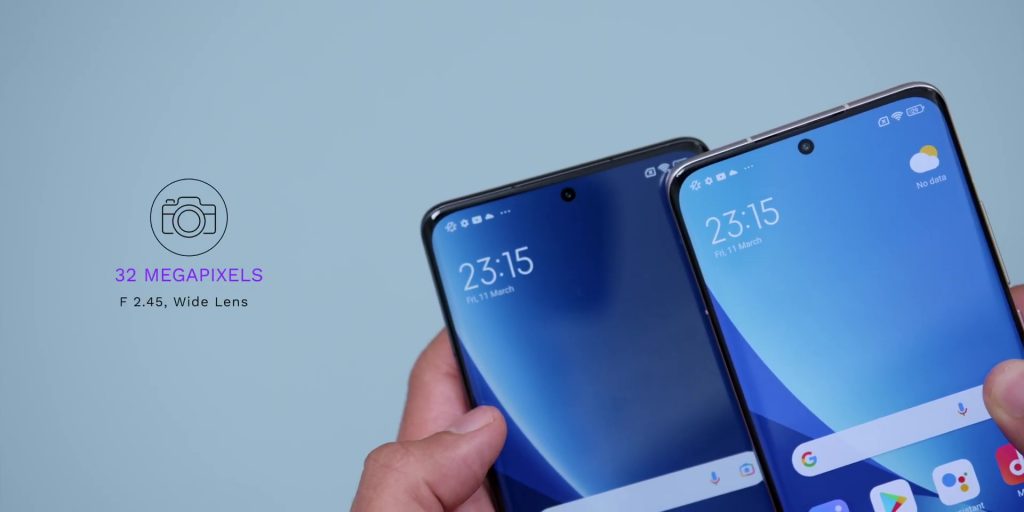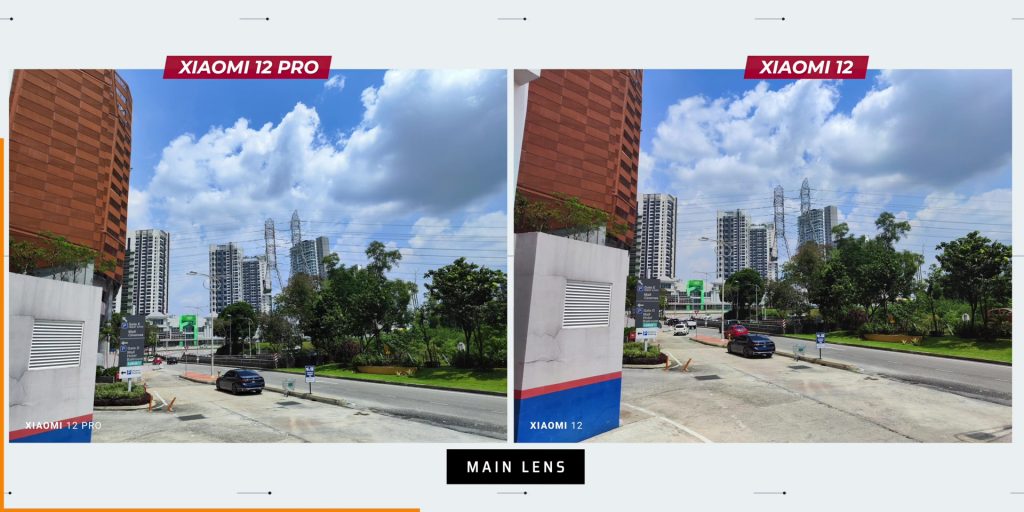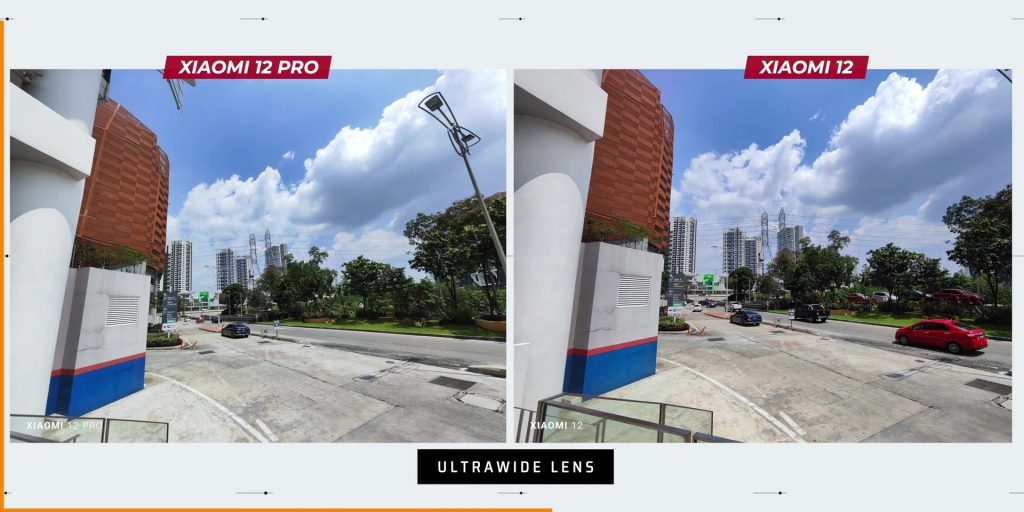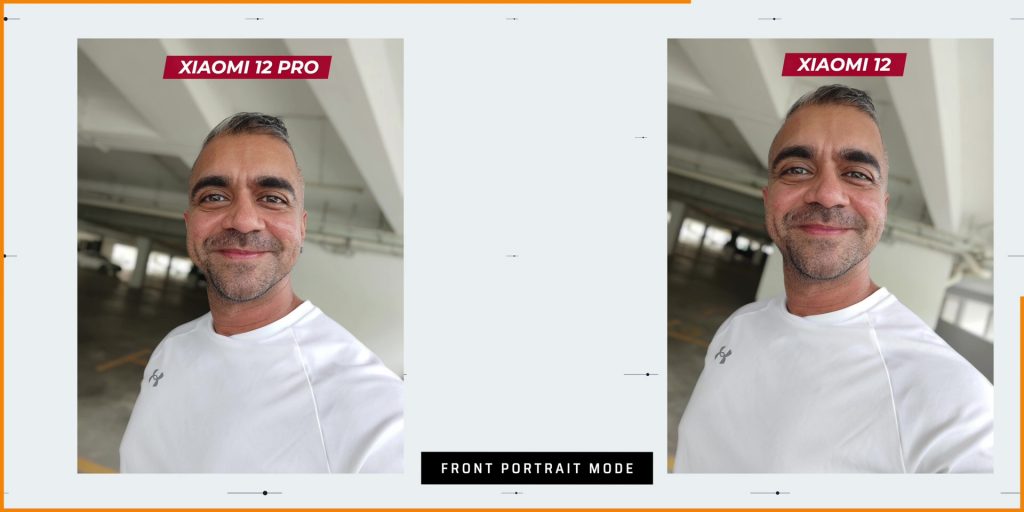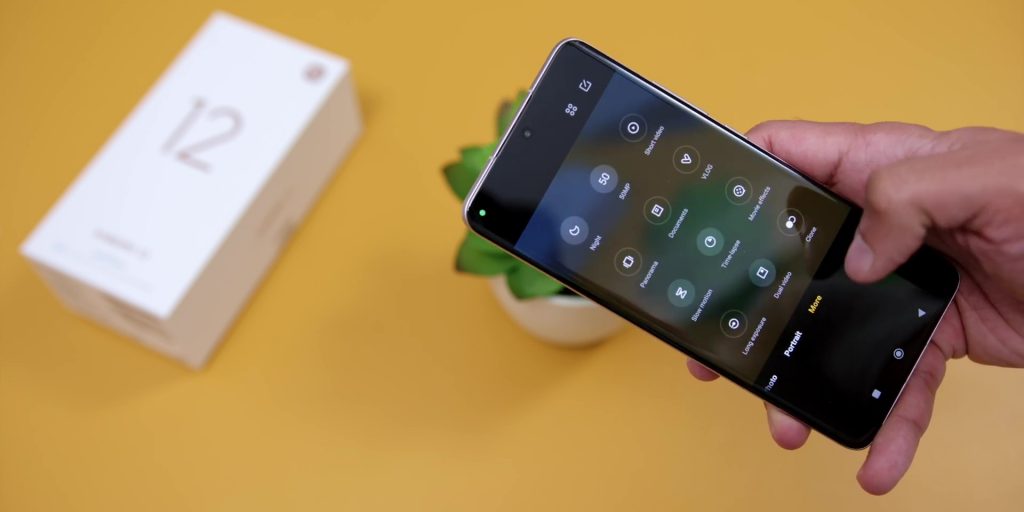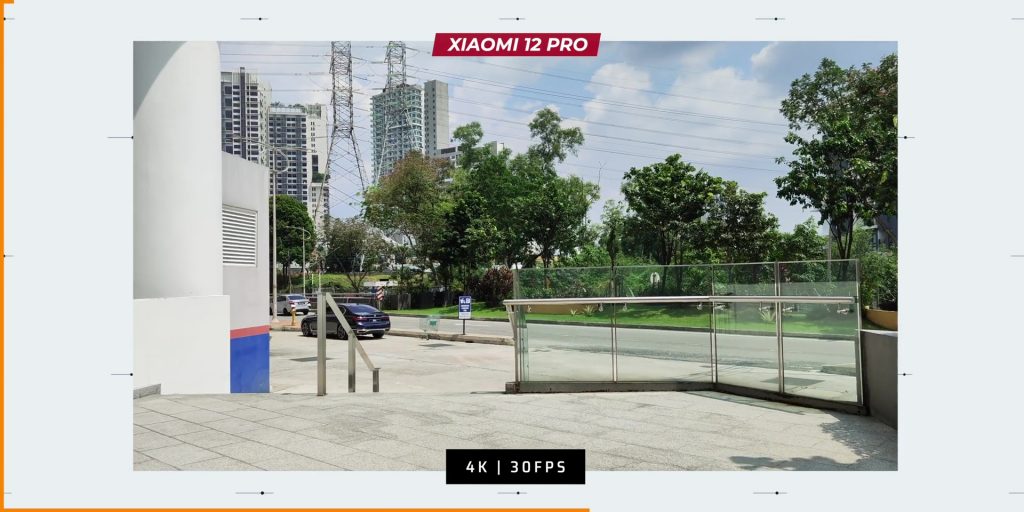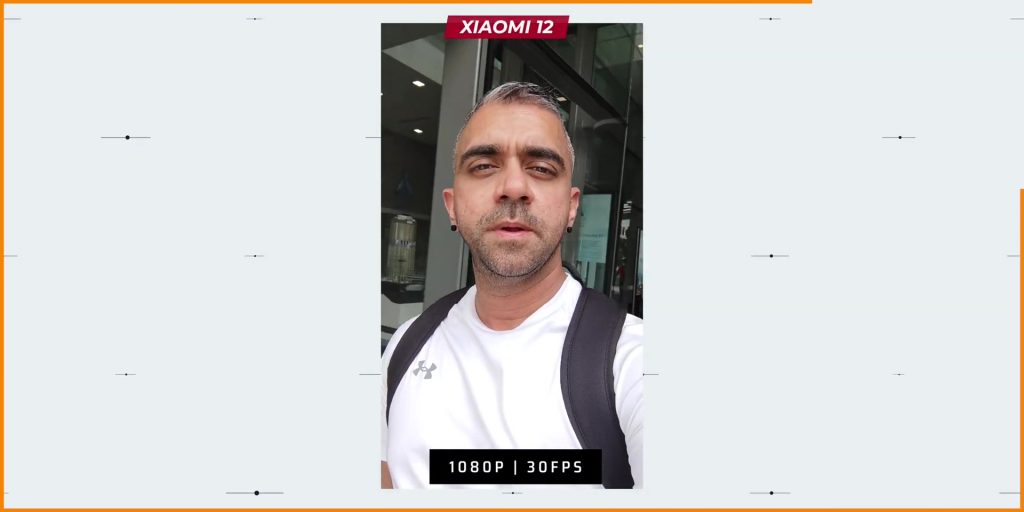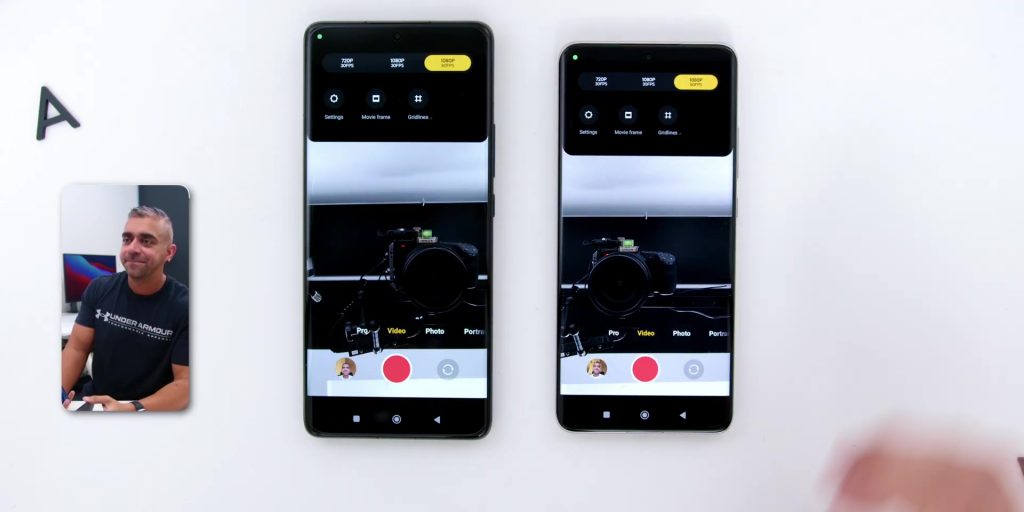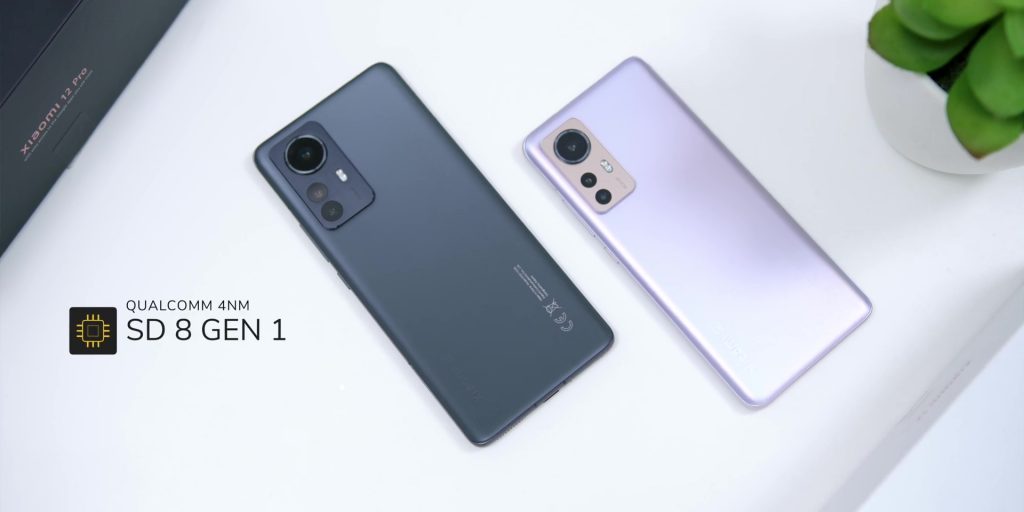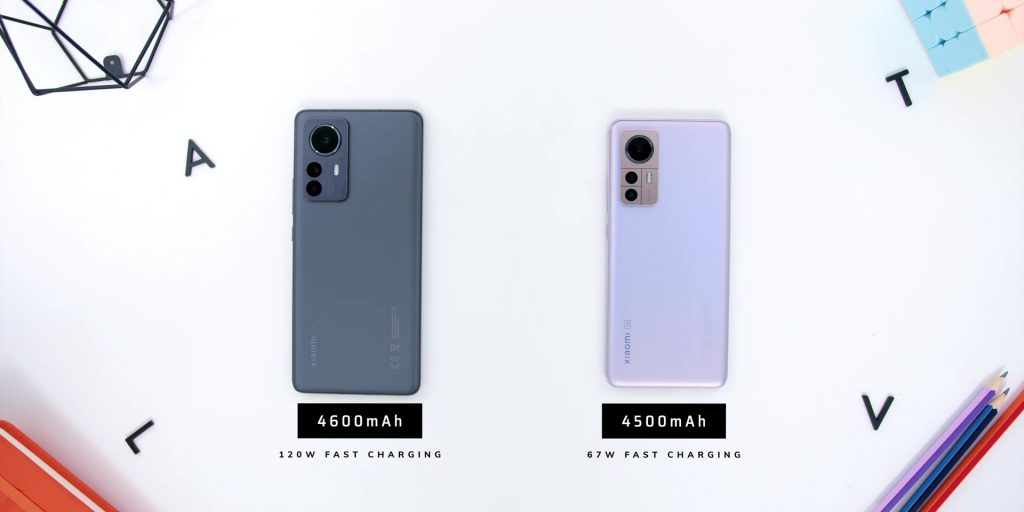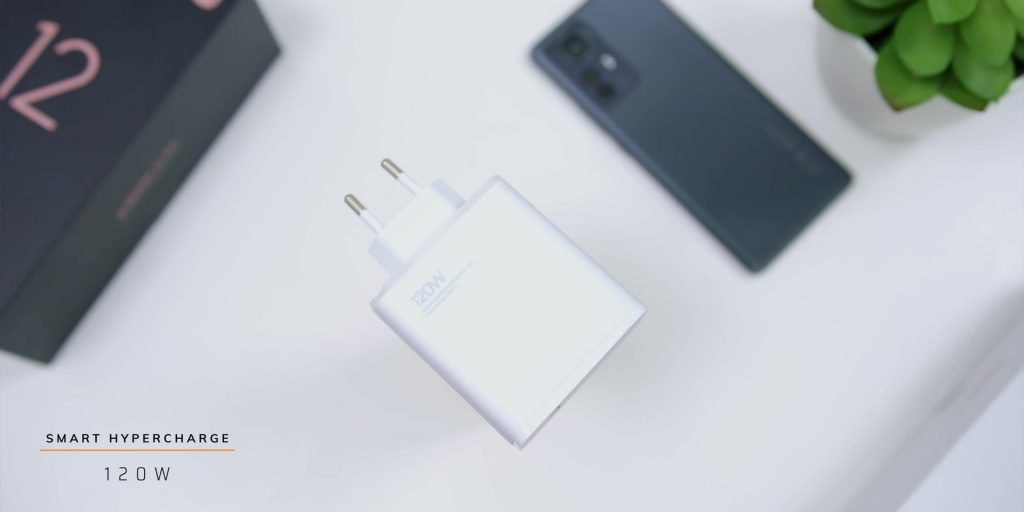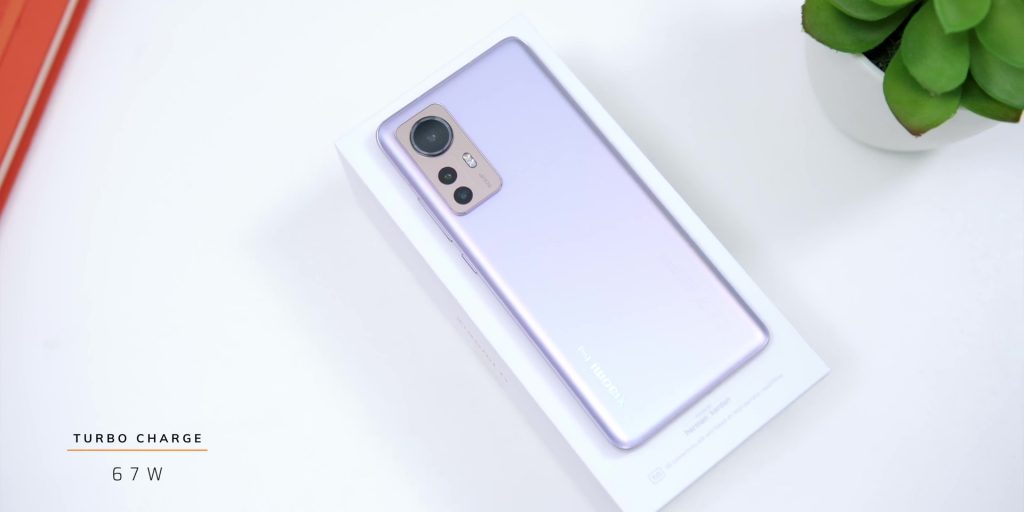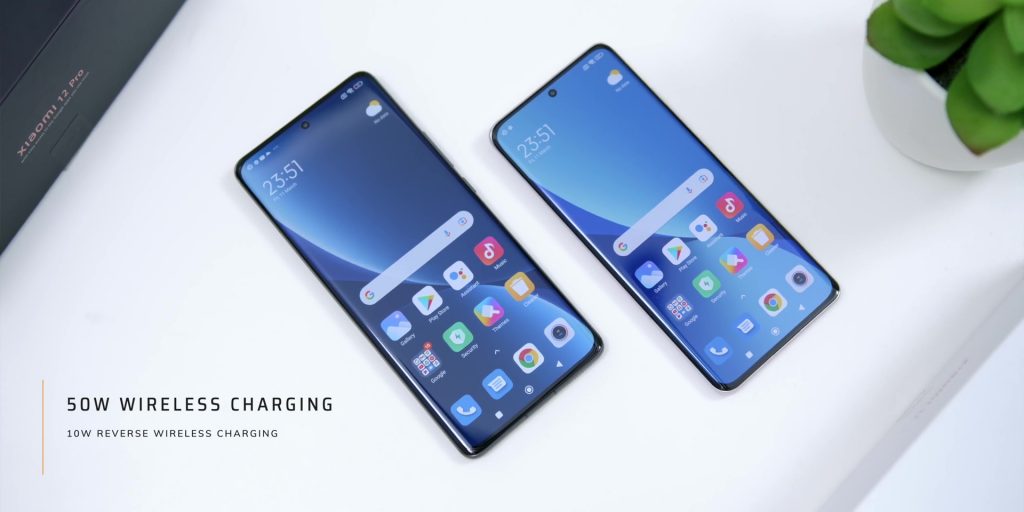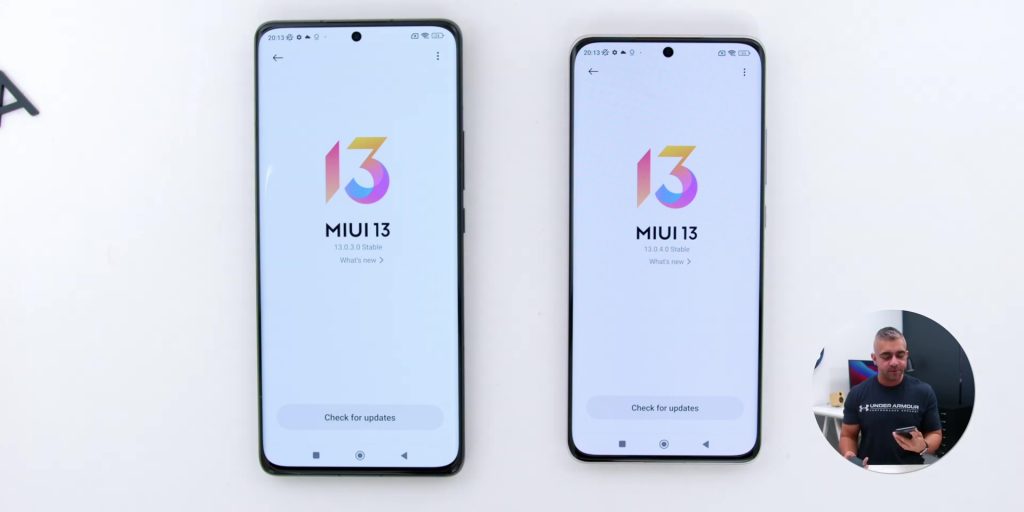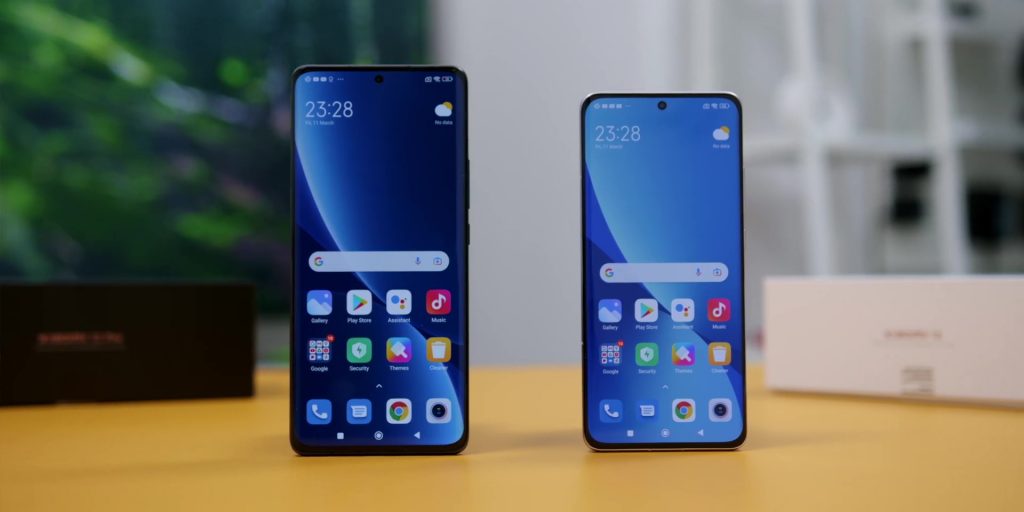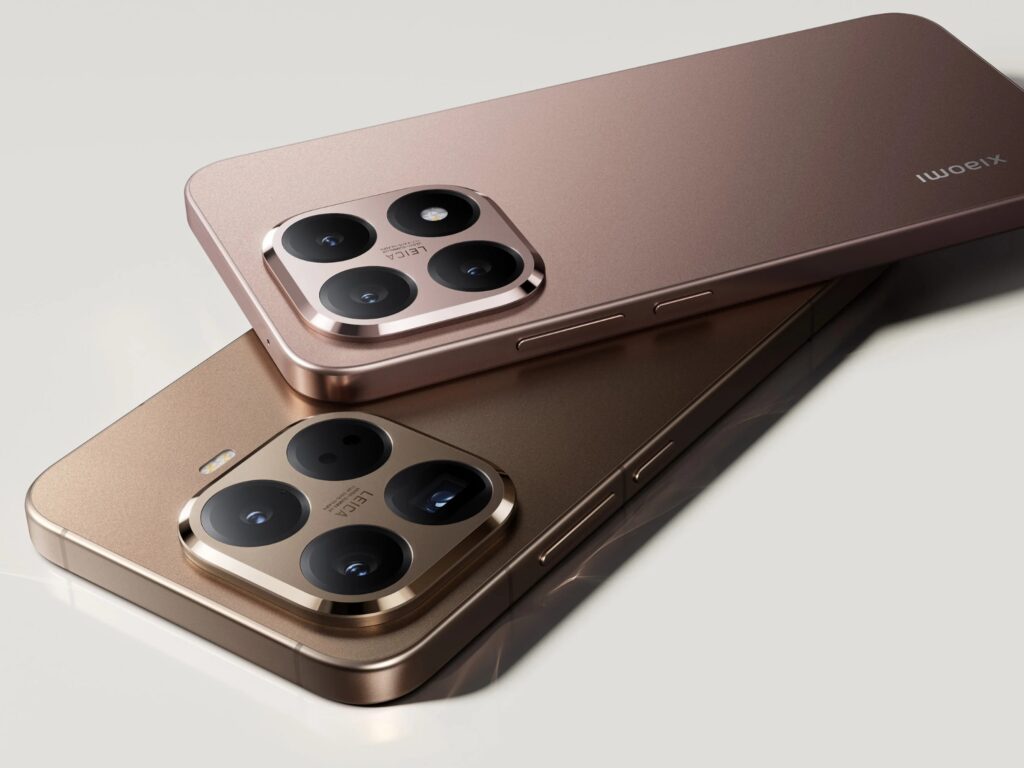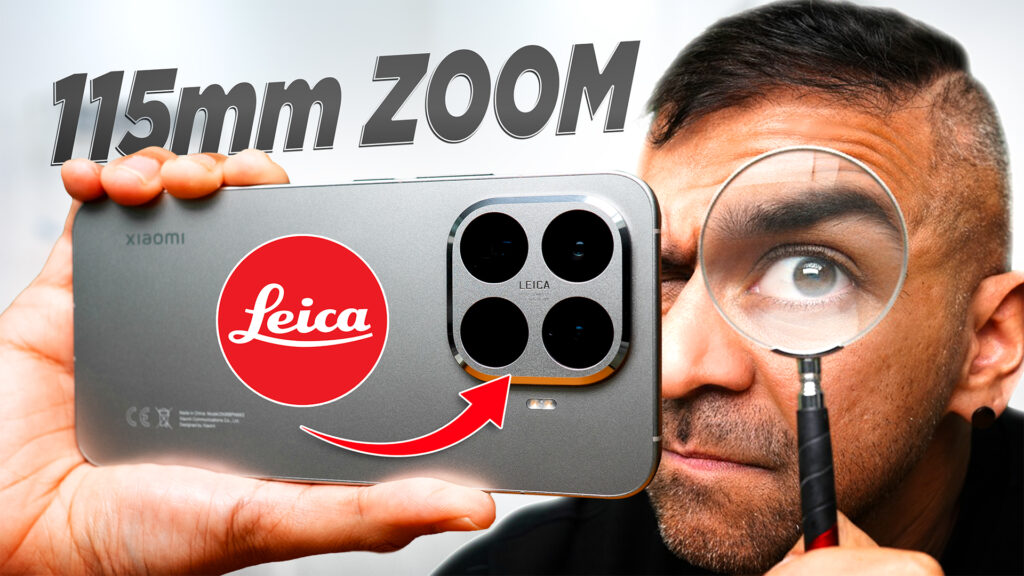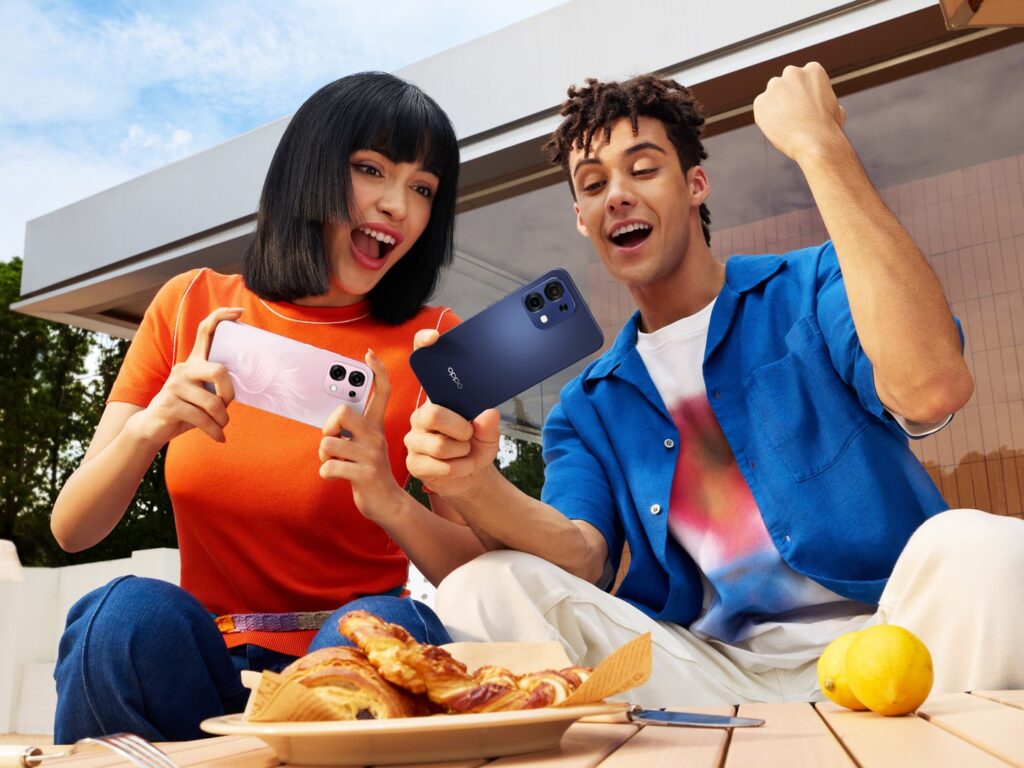So Xiaomi just dropped both the Xiaomi 12 and the Xiaomi 12 Pro, where the Xiaomi 12 Pro has a crazy 120W Hypercharge, a triple 50-megapixel camera, a WQHD+ LTPO AMOLED Display, and more!
Hmm, so where does that leave the Xiaomi 12 then?
Unboxing
But let’s first unbox both phones, starting from the Xiaomi 12; the box comes in White, with the number “12” in the middle, “Xiaomi 12” below, and the “Sound By Harman Kardon” down below. Then, at the side below of the box, the color and the RAM and storage specs you choose.
Opening the box reveals another smaller white box, where you will find the SIM ejector pin on the outside, and there are the manuals and the clear phone case on the inside.
[easy-image-collage id=6856]
Then you will find the phone itself.
Underneath, there is the USB-A to USB-C cable, and the 67W Turbo Charging Brick.
—
Then, the Xiaomi 12 Pro comes with a black box instead, with similar text placements in front and the color and specs below at the side of the box.
And like the non-Pro variant, the smaller box has the SIM ejector pin, the manual, and the clear phone case.
After being greeted with the phone, underneath there is the USB-A to USB-C cable. And unique to this Xiaomi 12 Pro, there are the included massive 120W HyperCharging Brick.
.
Build & Design
Now looking at the build of the phones, my first impressions, both phones had solid build and had quite a weight to it as well, definitely heavier than the T series of smartphones, where the Xiaomi 12 weighs at 180 grams, and the Xiaomi 12 Pro weighs at a hefty 205 grams.
But because of the matte finishes and the 3D curves wrapping around the phone from the front to the sides of the phone did help with the overall grip of the phone, so it did feel very nice in the hands.
Speaking of finishes, the rear of the phones had a matte finish too, it looked like something Xiaomi has never done to their smartphones, the purple color matte finish kind of reminded me of OPPO’s Reno Glow type of finish, and I have to say that I kind of prefer this purple-ish kind of finish compared to the multi-colored one that you’ll find in a typical OPPO Reno Glow smartphone as well.
The rear camera array designs are the same for both variants, and I absolutely appreciate that both phones do not wobble at all when typing it on a surface, which a lot of smartphones these days usually tend to wobble due to the camera array’s design.
Then looking at the ports and buttons, other than the USB-C down below, there is the SIM ejector slot, where each on the opposite sides, both has dual SIM support, but no MicroSD card slot expansion, and you will find one of the quad speakers for the Pro variant over there as the other speaker is on top, where you will find the Harman Kardon logo over there, together with the IR Blaster.
Finally, there is the power button and the volume rocker on the right.
So overall, I’d give the phone an A- for the phone’s build; it definitely checks the right boxes to be a very great flagship-level build quality smartphone.
.
Display
Now looking at the display, the Xiaomi 12 comes with a smaller 6.28-inch AMOLED DotDisplay with a resolution of FHD+ 1080 x 2400 pixels, and the Xiaomi 12 Pro comes with a larger 6.73-inch AMOLED DotDisplay with a higher WQHD+ resolution of 3200 x 1440, where inside the settings, there is an option for you to bring the resolution down if you want to save battery.
BUT I have to say, my oh my, the screen on the Xiaomi 12 Pro is the best that I have seen on any Xiaomi smartphone, ever since the Xiaomi Mi 11 Ultra, but that’s not to say that the non-Pro Xiaomi 12 wasn’t as good because it does use the same display technology so if you compared both screen side by side you will see only a minute difference between them.
Going deeper into why the screen is as gorgeous as it is, is because the Xiaomi 12 Pro uses Samsung’s E5 screen panel, which we all know how amazing their screen panel has always been, it is an LTPO display with AdaptiveSync Pro, so we are looking at a dynamic 120Hz refresh rate panel for the Pro variant that goes down to a mere 1Hz to 120Hz depending on your usage and an AdaptiveSync 120Hz technology for the non-Pro variant, where it won’t go down to 1Hz like the Pro variant but still, it is overall adaptive depending on your use as well.
And instead of typically doubling up the touch sampling rate to 240Hz, both the screens have a high 480Hz touch sampling rate instead.
Then the screen panel has the Corning Gorilla Glass Victus protection, and one interesting thing that I found is that the in-display fingerprint sensor is placed slightly towards the bottom of the screen for non-Pro variant, not a huge deal or anything but something to keep in mind with.
Brightness levels were perfect, where the Pro variant has a peak brightness up to 1,500 nits, and the non Pro variant goes up to 1,100 nits of peak brightness and during my first impressions using the phone for several days and watching videos on it was really a pleasant experience.
It has Widevine L1 Support on both phones, and on top of that, it has HDR 10 and Dolby Vision support, where you can even see the logo of the Dolby Vision over a movie that has one, which is something that even Samsung S22 Ultra doesn’t have at this moment.
The audio experience on both was really impressive, too, due to the sound tuning of Harman Kardon with Dolby Atmos support, where the Pro variant has Quad Speakers, and the Non-Pro version has Dual Speakers instead.
So with this, I would give the phone screens an A+ because Xiaomi has really stepped up their screen quality “game” in these new Xiaomi 12 series of smartphones and is surely a HUGE reason to get the phone.
.
Cameras
Now in terms of the cameras, starting from the Xiaomi 12, it has:
- a 50-megapixel f 1.88 aperture lens,
- a 13-megapixel f 2.4 ultrawide lens,
- and a 5-megapixel 50mm telemacro lens
Then the Xiaomi 12 Pro comes with a different Sony IMX707 sensor of:
- a 50-megapixel f 1.9 aperture lens,
- another massive 50 Megapixel f 2.2 aperture ultra-wide lens,
- and ANOTHER 50-megapixel f 1.9 aperture 48mm telephoto lens
Then as for the front camera, both have the same 32-megapixel f 2.45 aperture lens.
And based on my quick test shots, the rear cameras were really great for both phones, definitely flagship level images both for the rear and front cameras as well.
Now since this is a first impressions video, I didn’t go into detail into comparing how different the shots were to compare both phones, which we shall save that for an in-depth camera review, especially testing out all the AI software features.
As for video recording, both phones can record up to 8k 24 frames per second, a frame rate that I never ever use.
And yet again, it’s the year 2022, and STILL, we don’t have front 4k video recording, where it only maximizes at 1080p up to 60 frames per second; why Xiaomi? Why?
But yes, both the rear and front video quality was excellent on both phones, which I am indeed looking to test them more in my full video review.
.
Specs
Next, looking at the other specs of both of the phones, what’s nice is that both have the latest Snapdragon 8 Gen 1 Chipset, so there is no chipset “discrimination” for the Pro and non-Pro variant, which usually is the case.
Both devices use the LPDDR5 RAM and UFS 3.1 Storage, where the storage and RAM can be configured based on what you choose that is currently available accordingly.
.
Battery
In terms of battery, the Xiaomi 12 has 4500 milliamps of battery, and the Xiaomi 12 Pro has a slightly bigger 4600 milliamps of battery.
As seen in the unboxing, the major differentiating factor on both phones is that the Xiaomi 12 Pro comes with the ability to charge up to 120 Watts with Xiaomi’s Smart Hypercharge and 67 Watts Turbo Charging for the Xiaomi 12, and since it uses Xiaomi’s AdaptiveCharge, it will learn your day to day charging routine to optimize the battery health for the phone and of course with the Xiaomi’s signature Surge P1 charging IC also on the device, you don’t have to worry about turning your phone into… *boom*
And of course, knowing that the 120 Watts charger does come inside the box, this is a clear FU towards all the companies who don’t provide a charger in their boxes.
Then both phones have 50 watts of wireless turbocharging and 10 watts of reverse wireless charging.
And yes, as usual, I shall see how much battery life I can get when using both phones daily.
.
Software
As for both of the phone’s software, both come shipped with the latest MIUI 13 on top of Android 12.
But weirdly enough, the Xiaomi 12 comes with version 13.0.4 and the Pro comes with 13.0.3… Yeap, MIUI at its best, but yes, during my first impressions, navigating and using the phone, launching apps, and scrolling was silky smooth, and everything was perfectly fine, and there were no issues over here.
.
Price & Availability
So as of the posting time of this review, there was no official price for the phone that has been announced yet here in Malaysia, so stay tuned for that!
Don’t miss out my full video review update in the future by

